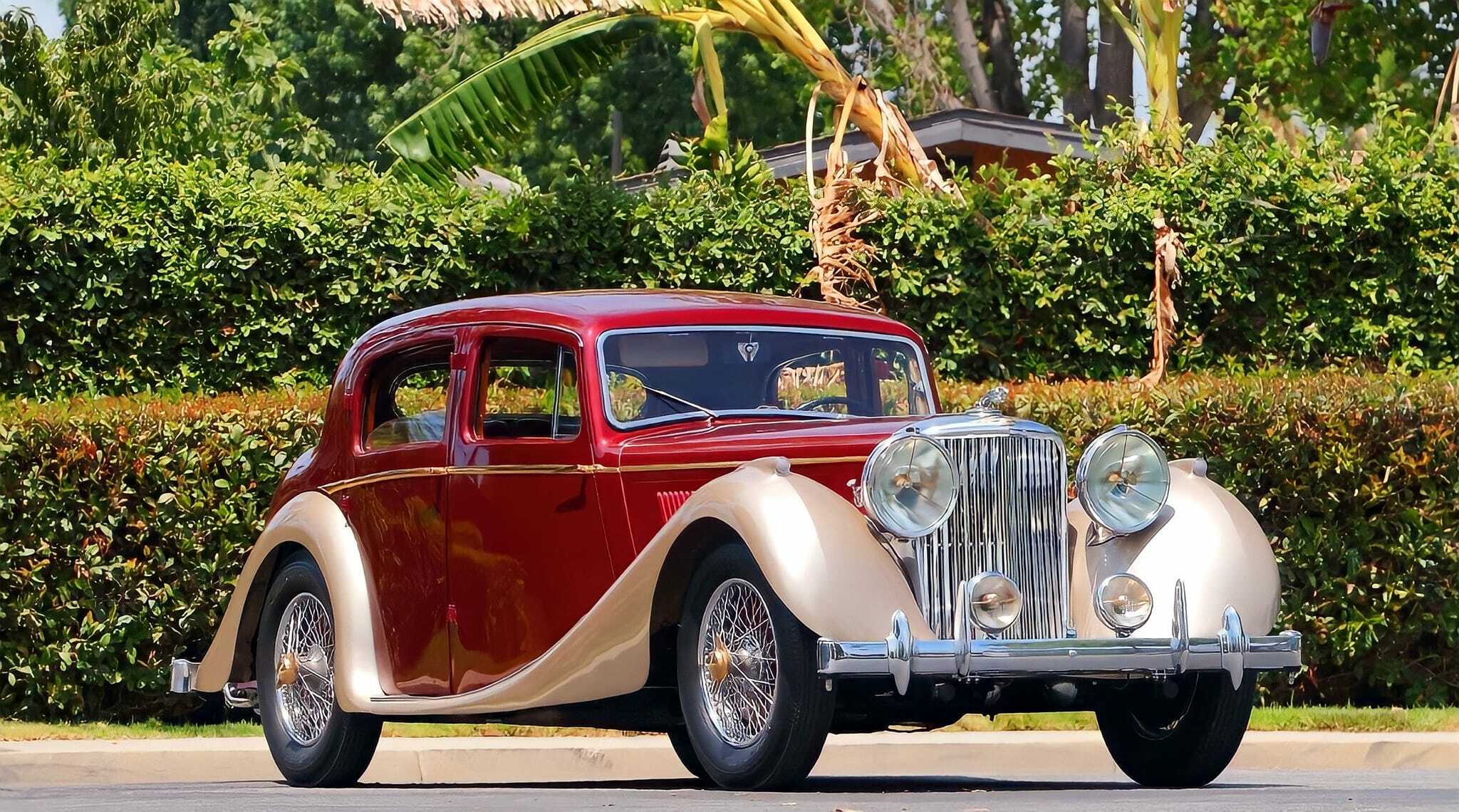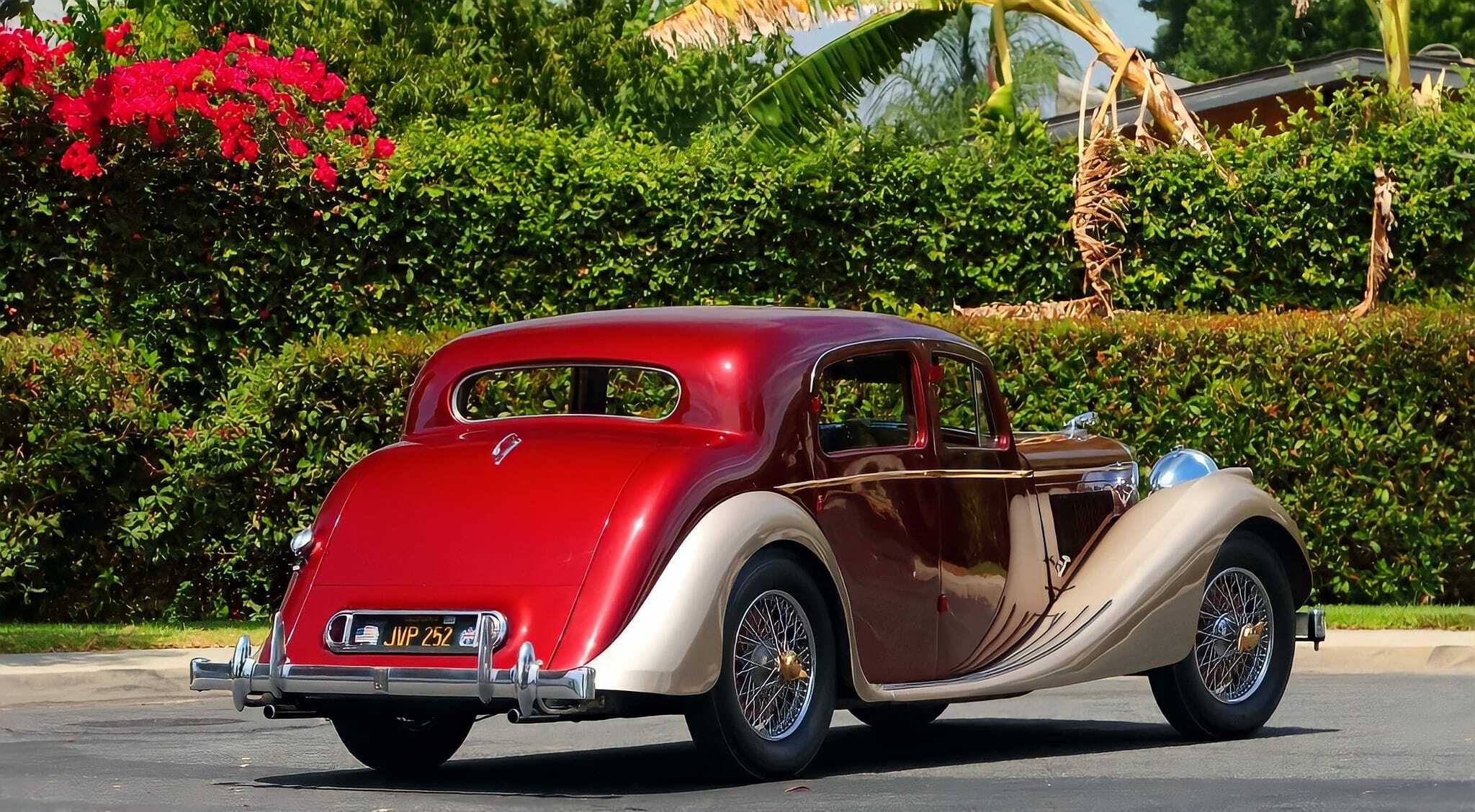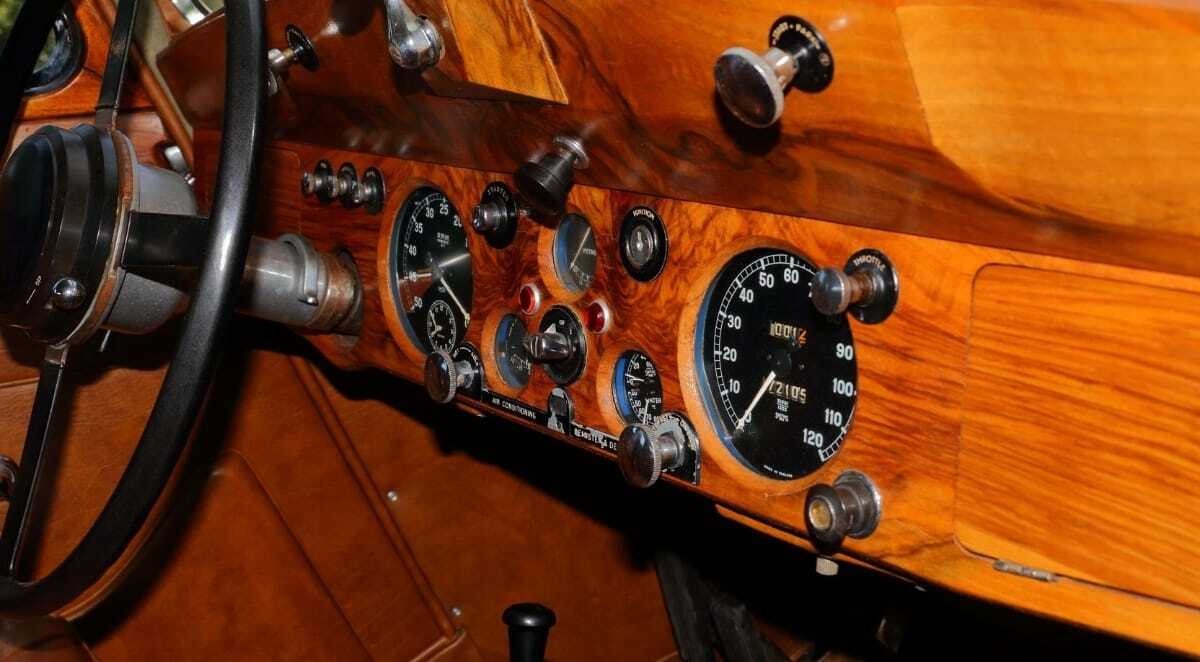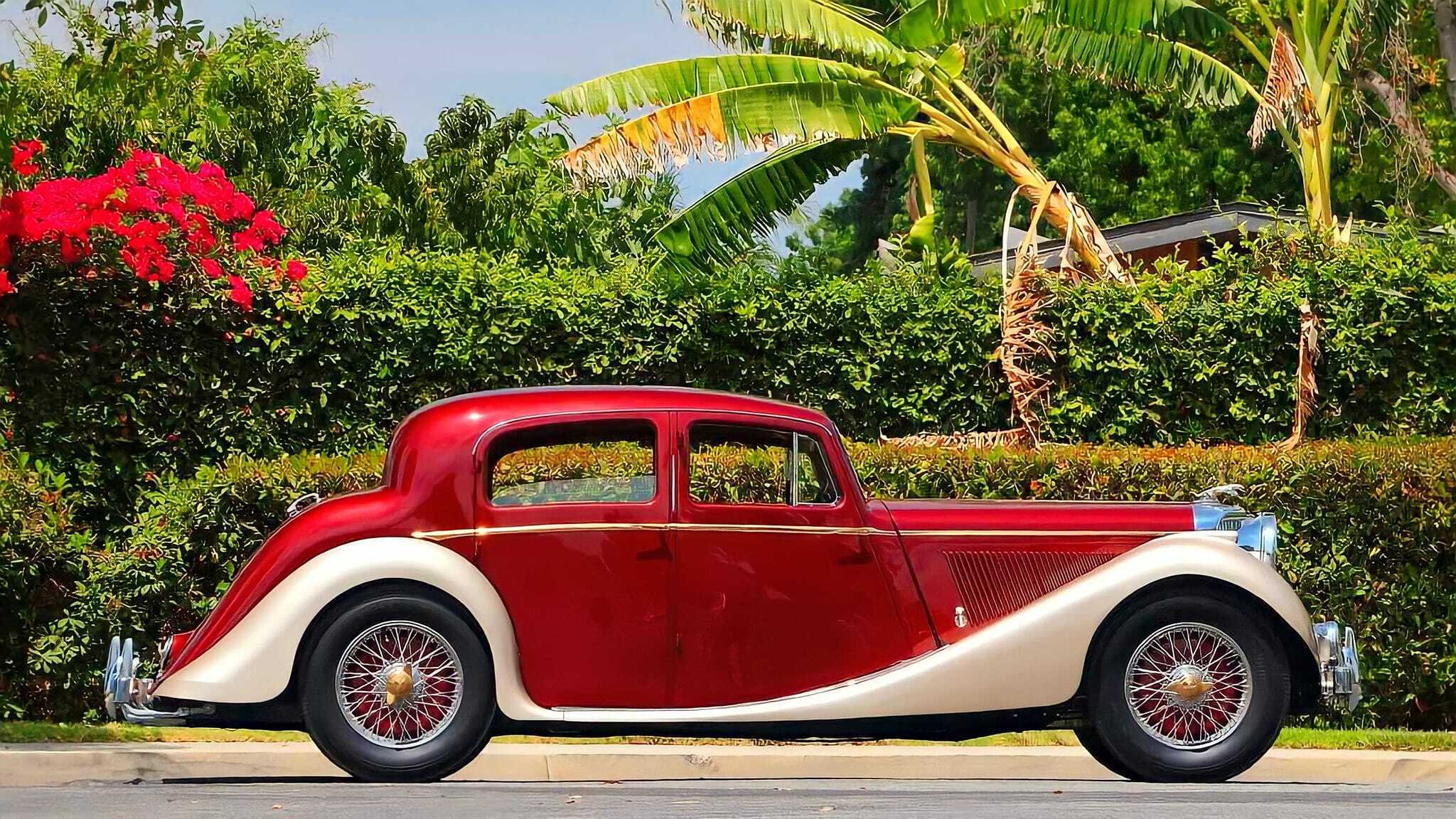The early postwar years of Jaguar Cars saw the introduction of the so-called Mark IV model line, which was built between 1945 and 1948 following the cease of hostilities.
Once referred to by each engine type, the Mark IV group designation came about for the sake of delineation when the Mark V series was formally introduced for 1949.
The example here is from the final year of this production window, 1948, and is a 4-door saloon version featuring the largest engine the company offered at the time: the 125 HP 3.5L inline 6-cylinder. Actually noted as a performance variant among the brand’s displacement levels, this powerplant was marketed for European and North American customers, was capable of 95 MPH and created 184 lb-ft of torque. Twin SV carburetors feed it, with flowing split-duo exhaust manifolds and a polished valvetrain cover. It is backed by a Moss 4-speed transmission.
All Mark IV Jaguars were built upon a chassis using semi-elliptic leaf-spring suspension on rigid axles, both forward and aft, with the 3.5L receiving a 4.25 final-gear ratio in the rear-mounted differential. The steel body features a wonderful two-tone burgundy-and-champagne finish, using modest chrome and gold-toned trim and accessories throughout. Out front, the “JAGUAR 3 ½ LITRE” emblem is centered below the mascot, and every line of the car connects the Jaguar tradition. Inside, the interior features brown leather appointments, which blend to perfection with the body tones, and the car features a sunroof as well. The Jaguar luxury level continues with an adjustable driver’s seat, deep-pile carpeting, rear-passenger arm rests and wood-trim accents on the doors and dash. The crowning touches are wire wheels with beautiful gold-center knock-offs, and this example came with the rare fitted tool kit.
🏁 Motorblog | FOLLOW
Curated Automotive Awesomeness | Follow, Grab a Coffee and Enjoy. All the latest and best from the world of motoring





